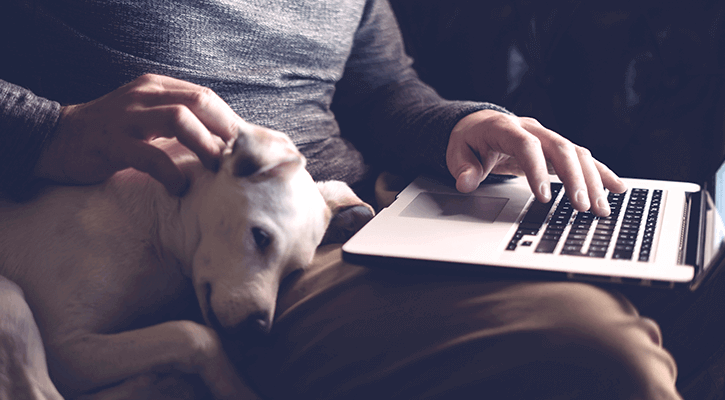
Post-Procedure Home Care
General Post-Anesthesia Instructions and Information
(Information may not apply to all cases)
Your pet may appear slightly groggy or disoriented for the remainder of this afternoon and evening. Let your pet rest or sleep as it wants, although you should expect him/her to readily get up to go outside or for feeding. Warn children that the pet may not feel normal and may attempt to bite if touched or handled. Restrict or assist your pet with stairs for the remainder of the evening.
Limit quantities of food and water to small portions at home this afternoon to avoid stomach upset and subsequent vomiting. You may resume a normal feeding schedule tomorrow unless otherwise directed below. Some pets will not eat right away. Call the office if your pet refuses to eat for longer than the next 24 hours.
Incision Care
If your pet has an incision: Your pet may not have any skin sutures at the surgical site. There are layers of sutures underneath the skin to hold the incision closed and assist in healing. A surgical glue may have been used on the visible wound and will dissolve in a few days. We do not need to see your pet for any further wound care unless complications occur.
If your pet has an incision with visible skin sutures / drain tube at the surgical incision(s). Please Make An Appointment as directed for recheck and/or removal. In some cases, your pet will require the use of an Elizabethan collar if skin sutures or a drain tube is present so that your pet cannot scratch or chew them out. Discuss drain tube care if applicable.
Make sure that your pet’s incision(s) does not get wet or dirty until well healed. Do not bathe your pet as directed after surgery.
If your pet is licking or scratching at the incision: An Elizabethan collar has been / needs to be placed on your pet. Please discuss use with the doctor, including the anticipated length of time it will need to be used.
If your pet scratches, chews or licks consistently at the incision(s), please contact the office so that we can advise you. A restrictive collar, shirt, or bandages may be necessary.
A small amount of redness or swelling immediately post op is normal, but worsening signs (increased redness or swelling, discharge of any volume, reluctance to eat or lethargy) warrant contact with our office.
For dogs, we recommend the use of a leash as directed after surgery. If a leash is not normally used, please restrict activity to a small area. We advise no free running as directed.
If your pet has a bandage or splint
Bandages or splints will need to be changed/rechecked/removed as directed. Please Make An Appointment for this as soon as possible. Keep the bandage as dry as possible. If your pet has a bandaged foot, please apply a plastic baggie on the foot when your pet goes outside to protect it from moisture. You may use tape for this – DO NOT USE A RUBBER BAND. Call the office if the bandage gets wet or you note an odor prior to the scheduled bandage change or removal.
Medications (if applicable)
An antibiotic has been dispensed for your pet today. Please continue administration as directed until gone. Call the office if you notice possible side effects (most commonly vomiting or diarrhea).
A prescription for an antibiotic has been written for your pet today. Please take this to any human pharmacy to be filled and start administering as directed. Call the office if you notice possible side effects (most commonly vomiting or diarrhea).
Pain medication has been dispensed for your pet today. Please contact the office if you feel that your pet’s pain or discomfort persist despite this medication. Discontinue medication and call if any vomiting, diarrhea or lack of appetite is noted!!
A prescription for pain medication has been written for your pet today. Please take this to any human pharmacy to be filled and start administering as directed. Please contact the office if you feel that your pet’s pain or discomfort persist despite this medication. Discontinue medication and call if any vomiting, diarrhea or lack of appetite is noted!!
Advice on Post-Procedure Homecare For Your Pet
These instructions for post-anesthesthia care are given as general guidelines for your pet’s comfort. If you are not sure which statements apply to your pet, or if you have any other questions or concerns regarding these recommendations, please call our office at (517) 337-4800. If it is after-hours and you are unsure of what to do, please contact MSU Veterinary Emergency or Lansing Veterinary Urgent Care.
Explore Our Complete List of Veterinary Services in Okemos, MI
- URGENT CARE – COMING JULY 19th!
- Rabbit Care
- Osteoarthritis in Pets
- Declawing Alternatives
- Blood Testing
- Radiology
- Diagnostics
- Feline Leukemia / Feline Immunodeficiency Virus Testing
- Fecal Cytology
- Heartworm Testing / Prevention
- Behavior
- Spay & Neuter
- Vaccinations
- Wellness Exams
- Dental Care
- Surgery
- In-House Laboratory
- Microchipping
